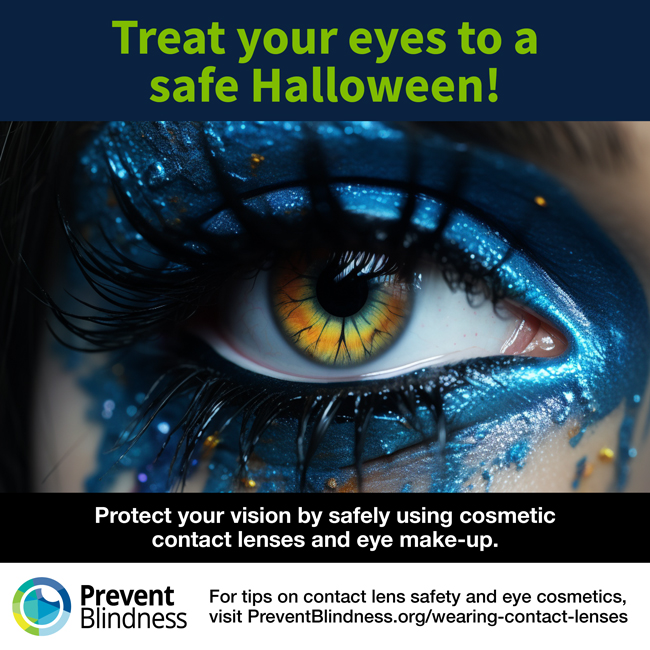Prevent Blindness Warns Public About the Dangers of Misusing Contact Lenses and the Potential for Damage to the Eyes
An estimated 45 million people in the United States wear contact lenses, according to the Centers for Disease Control and Prevention (CDC). Unfortunately, a recent CDC study showed that more than 80 percent of contact lens wearers reported at least one behavior that put them at risk for a contact lens-related eye infection. These reported behaviors included sleeping or napping in lenses, swimming in lenses, and replacing both lenses and lens storage cases at intervals longer than those recommended.
Prevent Blindness has once again declared October as Contact Lens Safety Month, to educate the public on the proper use of contact lenses and ways to avoid serious vision issues. Prevent Blindness offers fact sheets, shareable social media graphics, and a dedicated webpage.
Additionally, Prevent Blindness offers the “Contact Lens Safety” episode as part of its Focus on Eye Health Expert Series. Prevent Blindness President and CEO, Jeff Todd discusses patient advocacy, and the potential dangers of misusing contact lenses with Dr. Thomas L. Steinemann, professor of ophthalmology at Case Western Reserve University.
With Halloween quickly approaching, many consumers may be interested in using cosmetic or decorative contacts to enhance their costumes. However, many consumers may not be aware that all contact lenses are classified by the U.S. Food and Drug Administration (FDA) as prescription medical devices even when they are not used for vision correction. The FDA states that contact lenses are not over-the-counter devices. Companies that sell them as such are misbranding the device and violating FTC regulations by selling contact lenses without a prescription. Contact lenses sold without a prescription from unlicensed vendors such as certain online distributors or novelty stores, may be contaminated and/or counterfeit and therefore not safe to use.
Two types of eye infections that may occur from improper use of contact lenses are
acanthamoeba keratitis, and fusarium keratitis. Symptoms may include eye infection include blurry vision, pain in the eye, sensation of something in the eye, sensitivity to light (photosensitivity), and discharge. Anyone who experiences any of these symptoms should remove the lenses and consult an eye care professional immediately.
During Halloween, or at any time of the year, contact lens wearers must take extra care when applying and removing eye cosmetics.
“Contact lenses can be used safely and effectively to improve vision,” said Todd. “We ask all contact lens wearers to be diligent and practice good hygiene every day to keep eyes healthy and avoid painful and potentially blinding infections.”
Find out more about contact lens safety.
Download a copy of the 2023 Contact Lens Safety Month media release.

